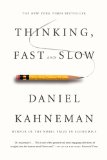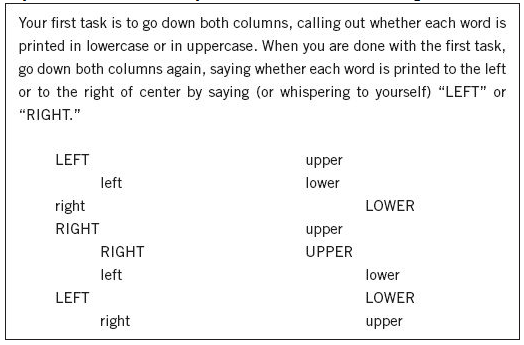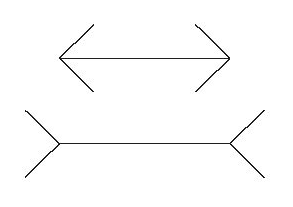Summary | Excerpt | Reviews | Beyond the Book | Readalikes | Genres & Themes | Author Bio

Critics' Opinion:
Readers' Opinion:
First Published:
Oct 2011, 512 pages
Paperback:
Apr 2013, 512 pages
 Book Reviewed by:
Book Reviewed by:
Beverly Melven
Buy This Book
The division of labor between System 1 and System 2 is highly efficient: it minimizes effort and optimizes performance. The arrangement works well most of the time because System 1 is generally very good at what it does: its models of familiar situations are accurate, its short-term predictions are usually accurate as well, and its initial reactions to challenges are swift and generally appropriate. System 1 has biases, however, systematic errors that it is prone to make in specified circumstances. As we shall see, it sometimes answers easier questions than the one it was asked, and it has little understanding of logic and statistics. One further limitation of System 1 is that it cannot be turned off. If you are shown a word on the screen in a language you know, you will read it - unless your attention is totally focused elsewhere.
Conflict
Figure 2 is a variant of a classic experiment that produces a conflict between the two systems. You should try the exercise before reading on.

Figure 2
You were almost certainly successful in saying the correct words in both tasks, and you surely discovered that some parts of each task were much easier than others. When you identified upper- and lowercase, the left-hand column was easy and the right-hand column caused you to slow down and perhaps to stammer or stumble. When you named the position of words, the left-hand column was difficult and the right-hand column was much easier.
These tasks engage System 2, because saying "upper/lower" or "right/left" is not what you routinely do when looking down a column of words. One of the things you did to set yourself for the task was to program your memory so that the relevant words (upper and lower for the first task) were "on the tip of your tongue." The prioritizing of the chosen words is effective and the mild temptation to read other words was fairly easy to resist when you went through the first column. But the second column was different, because it contained words for which you were set, and you could not ignore them. You were mostly able to respond correctly, but overcoming the competing response was a strain, and it slowed you down. You experienced a conflict between a task that you intended to carry out and an automatic response that interfered with it.
Conflict between an automatic reaction and an intention to control it is common in our lives. We are all familiar with the experience of trying not to stare at the oddly dressed couple at the neighboring table in a restaurant. We also know what it is like to force our attention on a boring book, when we constantly find ourselves returning to the point at which the reading lost its meaning. Where winters are hard, many drivers have memories of their car skidding out of control on the ice and of the struggle to follow well-rehearsed instructions that negate what they would naturally do: "Steer into the skid, and whatever you do, do not touch the brakes!" And every human being has had the experience of not telling someone to go to hell. One of the tasks of System 2 is to overcome the impulses of System 1. In other words, System 2 is in charge of self-control.
Illusions
To appreciate the autonomy of System 1, as well as the distinction between impressions and beliefs, take a good look at figure 3.
This picture is unremarkable: two horizontal lines of different lengths, with fins appended, pointing in different directions. The bottom line is obviously longer than the one above it. That is what we all see, and we naturally believe what we see. If you have already encountered this image, however, you recognize it as the famous Müller-Lyer illusion. As you can easily confirm by measuring them with a ruler, the horizontal lines are in fact identical in length.

Thinking, Fast and Slow Copyright © 2011 by Daniel Kahneman





The Funeral Cryer by Wenyan Lu
Debut novelist Wenyan Lu brings us this witty yet profound story about one woman's midlife reawakening in contemporary rural China.
Your guide toexceptional books
BookBrowse seeks out and recommends the best in contemporary fiction and nonfiction—books that not only engage and entertain but also deepen our understanding of ourselves and the world around us.